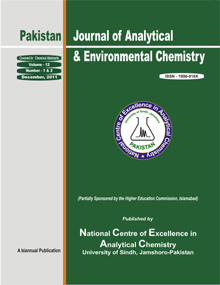Comparative Study of Mass Transfer Limitation Steps in Bemacid Yellow and Methyl Red Biosorption: Investigation using Unique and Binary Resistance Models
DOI:
https://doi.org/10.21743/pjaec/2025.06.13Keywords:
Bemacid Yellow, Methyl Red, Kinetic models, Mass transfer, Binary resistanceAbstract
In this study, brewery waste was employed as an adsorbent to remove two dyes: Bemacid Yellow (BY) and Methyl Red (MR). Optimal operational conditions were determined using the Bach mode. Kinetic data fitting was carried out using pseudo first and second order models. The results revealed that the pseudo second order model exhibited a better fit for both dyes, with a high determination coefficient (R2=0.99). The single resistance model demonstrated a positive correlation between the initial dye concentration (C0) and the external mass coefficient (kf) described by the empirical relationships: kfMR = 0.00044C0.650 and kf(by) = 0.0208C0.0330 for MR and BY dyes adsorption, respectively. According to the obtained results from the binary resistances diffusion model, it was determined that pore diffusion played a dominant role in the adsorption process of both dyes. This conclusion was supported by the observed increase in the film diffusion coefficient (Df) values. On the other hand, alternative formulas indicate that the adsorption processes of BY were primarily controlled by film diffusion. To summarize, the adsorption process of both dyes is influenced by two key steps: pore diffusion and film diffusion. This analysis provides insights into the significance of each parameter and their respective contributions to the overall adsorption mechanism.
Downloads
Downloads
Published
Issue
Section
License
Copyright (c) 2025 Pakistan Journal of Analytical & Environmental Chemistry

This work is licensed under a Creative Commons Attribution-NonCommercial-ShareAlike 4.0 International License.






